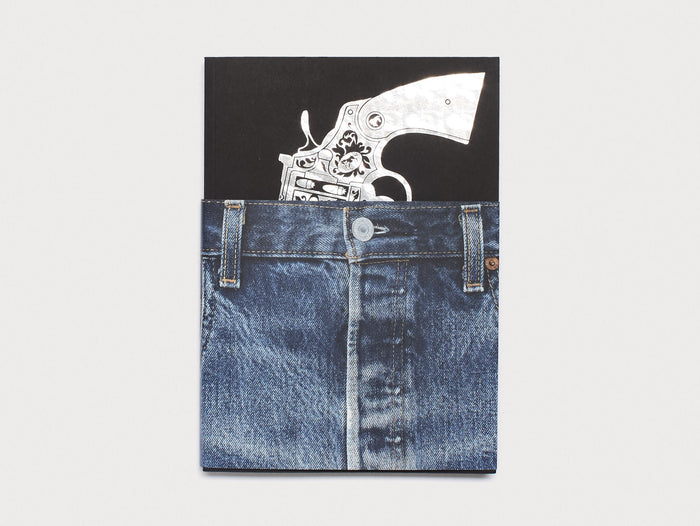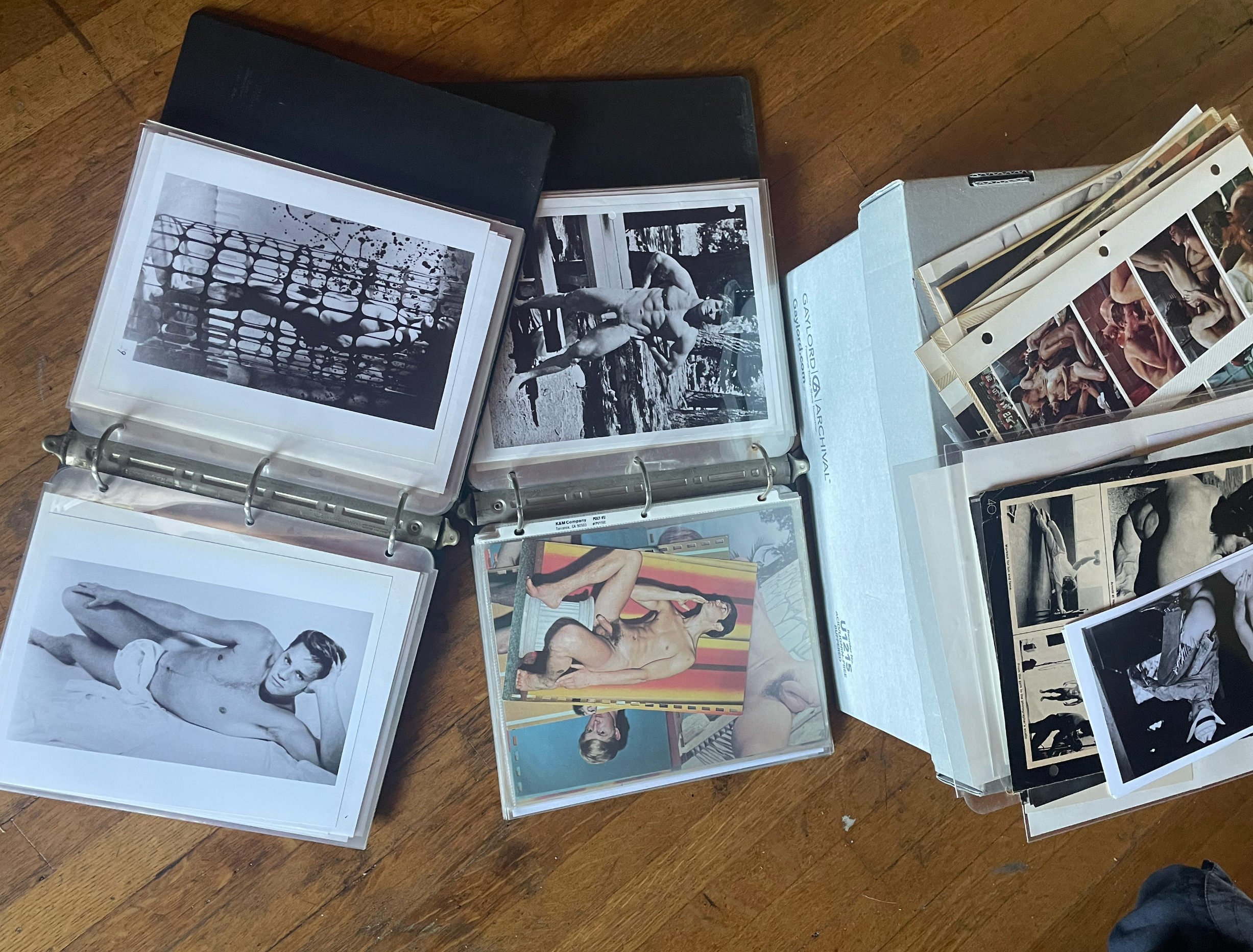
Photography by Gray Wielebinski
Author
Holly Connolly
Published
April 24, 2025
The London-based artist Gray Wielebinski has a special relationship with collage. It’s a term he has applied to all of his expansive practice – an approach which encompasses installation, video, sculpture and performance – in the sense that he draws together mixtures of references and interpretations, and in doing so produces something new, or makes the familiar strange again. For Pack, collage is applied more literally: the book collects over 200 of the artist’s full-page collages, loosely assembled around themes of masculinity, collectivity, games, sex, guns, and various forms of violence.
Assembled between mid 2023 and the end of 2024, a period that encompassed Wielebinski’s ICA solo show The Red Sun Is High, The Blue Low, Pack draws on the artist’s vast archive of vintage magazines, as well as newly sourced material including 70s pornography and vintage hunting magazines. The hypnotic, immersive images produced from this material are drawn together with a text by Wielebinski’s partner Asa Seresin, which connects the history of medical prosthesis with the history of dildos. Here Wielebinski discusses making juxtapositions, being immersed in violence as a theme, and creating work that ordinary people can own.
I'm interested in what already exists in the world
In other interviews you’ve used collage as a broad term for all of your practice, and you described your ICA show as one of ‘collaged methodologies’. Why do you think you are so drawn to assembling different parts of things together?
I guess one way to answer this is that I'm interested in what already exists in the world. By rearranging what exists, cutting it up, making surprising juxtapositions, things that feel familiar can become strange again, and new possibilities emerge.
The writer Asa Seresin, who you are married to, wrote the text at the beginning of the book. Introductory texts to art books can sometimes feel a little perfunctory. This one feels integral to understanding the collages, particularly the repetition of images of guns and knives. How was it to collaborate for this?
Because we are married and work together in such a collaborative way, Asa knew what the project was from the beginning. He looked at all the collages as they were coming together, and even had to spend a few weeks living with thousands of images spread out all over our living room. I also use him as a resource to bounce thoughts back and forth, and to translate my visual and conceptual ideas into writing. But when it came to writing the essay, he took inspiration from what I had been thinking about and discussing with him and then expanded on that based somewhat on his own interests. There is also a reflection of our relationship in there, to how we relate to our own bodies, sex, and intimacy, because we are both trans men, so we have intertwining interests in masculinity, homosexuality, plurality, and different kinds of extensions of the body.
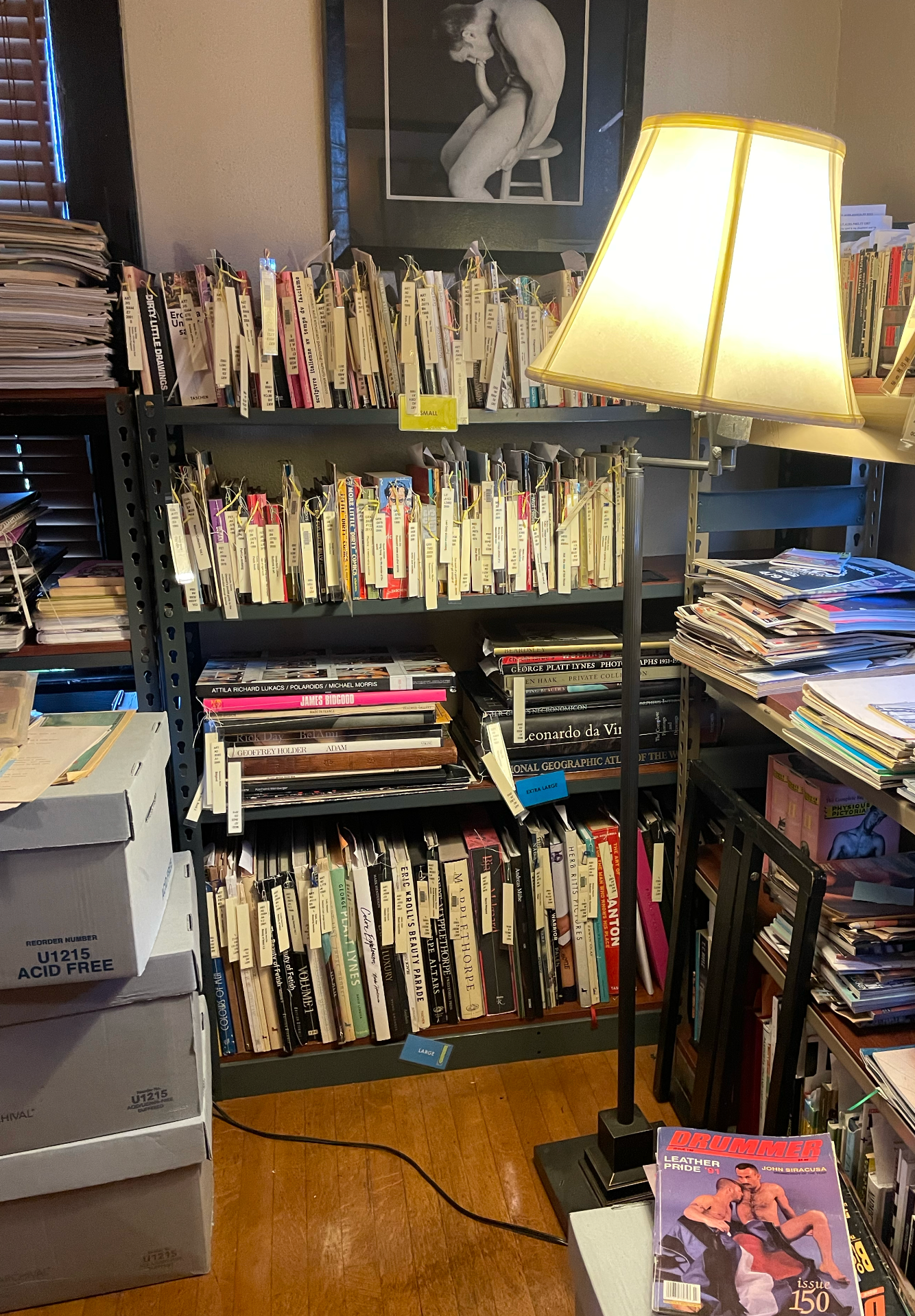
Photography by Gray Wielebinski
I'm interested in the strange and terrible beauty of some of these objects
Something that I love about these collages is your ability to draw comparisons between things by putting images together (guns and penises is an obvious example). It feels like a way of having an open conversation with an audience, does that resonate?
That's great to hear, because that is what I am aiming for. At points with this project and other work I've been making around gun imagery, I've worried about the possibility that it might seem like I'm glamorizing or endorsing guns. I'm actually terrified of guns, my dad once took me to a shooting range for some father-son bonding and I cried! At the same time, because so much of my work is about American culture and the collapse of American empire, it's not something I can ignore. Through using this collage technique, I'm trying to get past basic assumptions about what guns and gun culture are and make it strange again. That includes cliched associations, like the one between guns and penises, which is kind of uninspired and rote but hopefully becomes more interesting or strange through these collages. Other work I've made recently involves material like bullet-proof tiles or textile works that incorporate special cloth used to clean guns along with bleached denim and rust-dyed cloth. Most people will not directly recognize these objects or be able to trace them back to guns so explicitly, but it becomes a way to think about very familiar objects differently through materiality. I'm interested in the strange and terrible beauty of some of these objects that are created for the purpose of violence and the cultures that surround them.
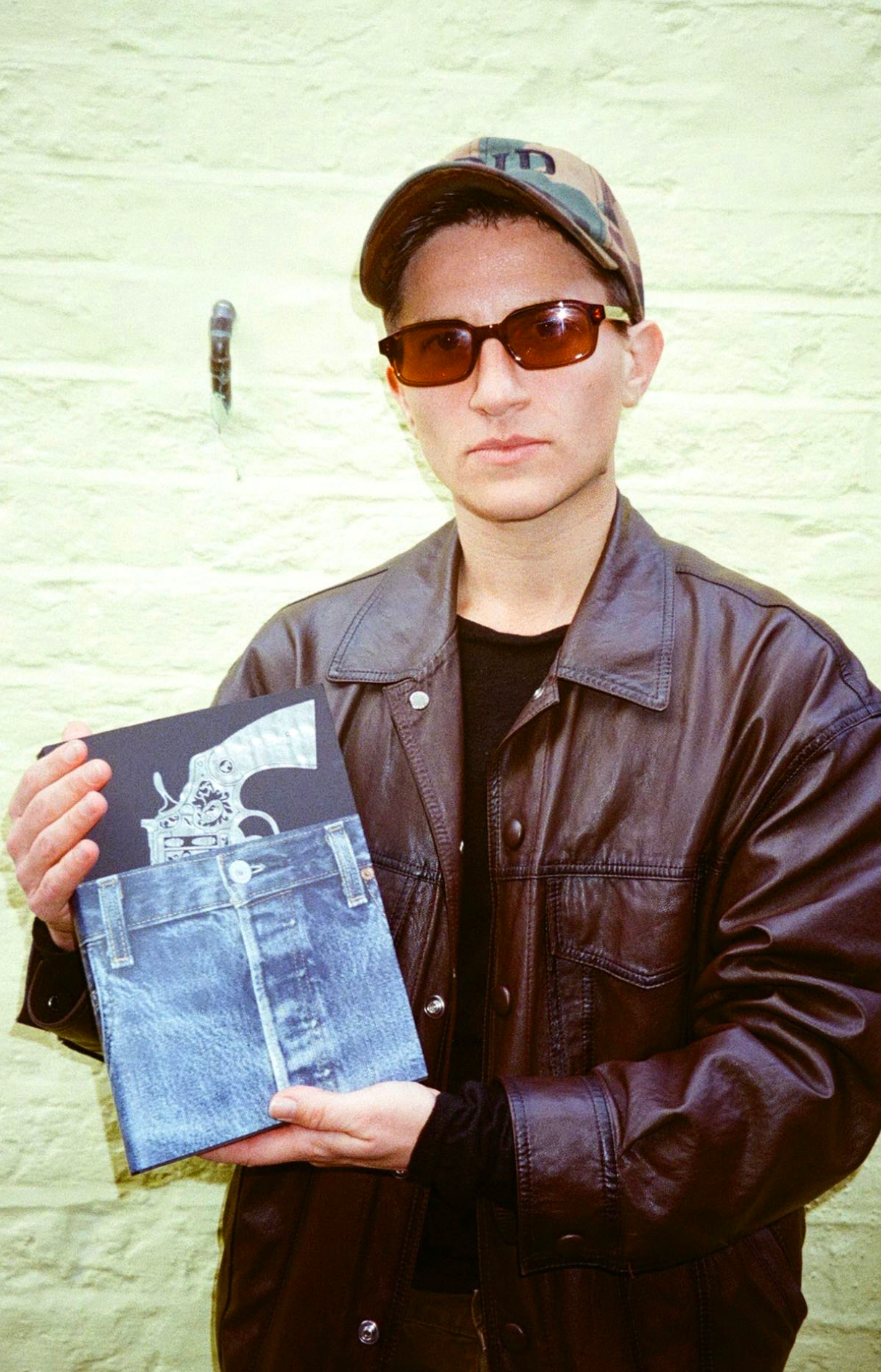
Portrait of Gray Wielebinski
It takes a toll to be so immersed in violence
You assembled the images over a period of more than a year, beginning in June 2023, just before your ICA show opened, and ending October 2024. What was that period like? Can you trace any kind of arc through the images, looking back?
That was a pretty intense period of time. The ICA show was so all-encompassing, I put so much into it, not only the show itself but the book we produced to accompany it and the public program. It was also a reaction against some of the earlier ways I'd been working and how my work had been received, which was often in relation to queer and trans identity. With the ICA show, I was thinking about questions that certainly pertain to queerness and transness – like surveillance, voyeurism, secrecy, and deviance – but in an abstracted way, and in connection to broader forces like militarism, empire, and apocalypse. It was also very architectural and conceptual, so I wasn't necessarily making things by hand. I returned to more literal cut-and-paste collage with my show Fratricide at Anat Ebgi Gallery in LA around the same time in 2023, and now to quite an extreme with Pack. That was great, because it is such an intricate and hands-on process, but it was also a bit crazy-making. At times I felt literally possessed by these images, and it takes a toll to be so immersed in violence not only as a theme but as a sort of medium or material in and of itself. I also wondered if I was re-tokenizing myself as a trans, gay artist who could be seen as ‘simply’ making work about gay porn. But the final result does not feel like that and I feel strongly that the intensity and overwhelmingness of the imagery is very much part of the conceptual approach to the themes I wanted to explore.
Where did you source the imagery from? And what was the process of assemblage like?
A lot of the materials I’ve been collecting and amassing for years at this point. Some I’ve had since before I moved to London nine years ago; I have lugged them around with me from place to place. Others have been more recent acquisitions along the way, some specifically for the book project as it took shape. For this project in particular I needed to collect gun imagery, so I became more immersed in gun culture through all different types of sources, from vintage gun magazines and catalogues to books on how to train dogs for hunting. Other sources range from vintage pornography (specifically from the 70s and 80s), yearbooks, fraternity magazines, Abercrombie & Fitch catalogues, survivalist/bunkerism magazines from the US, the UK and Japan, wrestling and bodybuilding magazines, antique catalogues, and then I was able to get quite a lot of archival material donated from The Tom of Finland Foundation, where I was in residence in summer 2024. Part of the ‘fun’ in putting the book together lay in either recognizing or creating connections between these disparate materials and making something new from them.
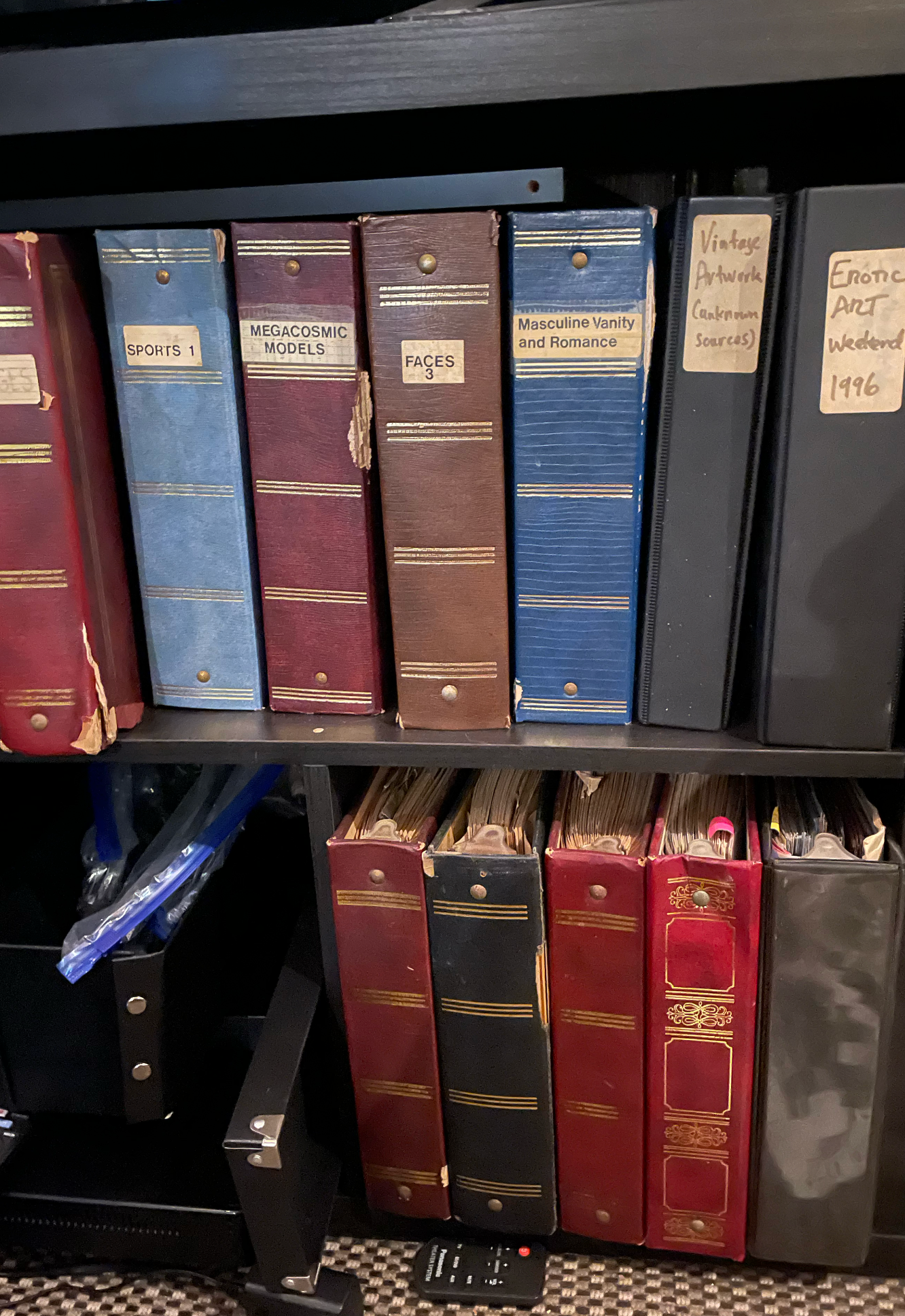
Photography by Gray Wielebinski
It works on a kind of meta level as a giant collage itself
Collage as a medium is inherently tactile and hands-based, so it feels fitting to make collages for a book, rather than say for a gallery show. But I’m interested in why you wanted to make a book, and how that idea came about?
Lucas approached me about doing a book with Lichen and I was really excited about the idea. The whole team has been amazing, especially in terms of coming up with this incredibly inventive design for the cover and elaborating the project further out of a traditional book form, with the accompanying pack of cards. I like that the book is made up of individual collages but also that it works on a kind of meta level as a giant collage itself. I love the materiality of it, the feel and smell of the paper, as well as the cover. I like that people can flick through it at different speeds. Because much of the art market is inaccessible to 99.99% of people, it's important to me to make works – whether books or the pack of cards or screenprinted t-shirts – that ordinary people, my friends, whoever, can actually own.
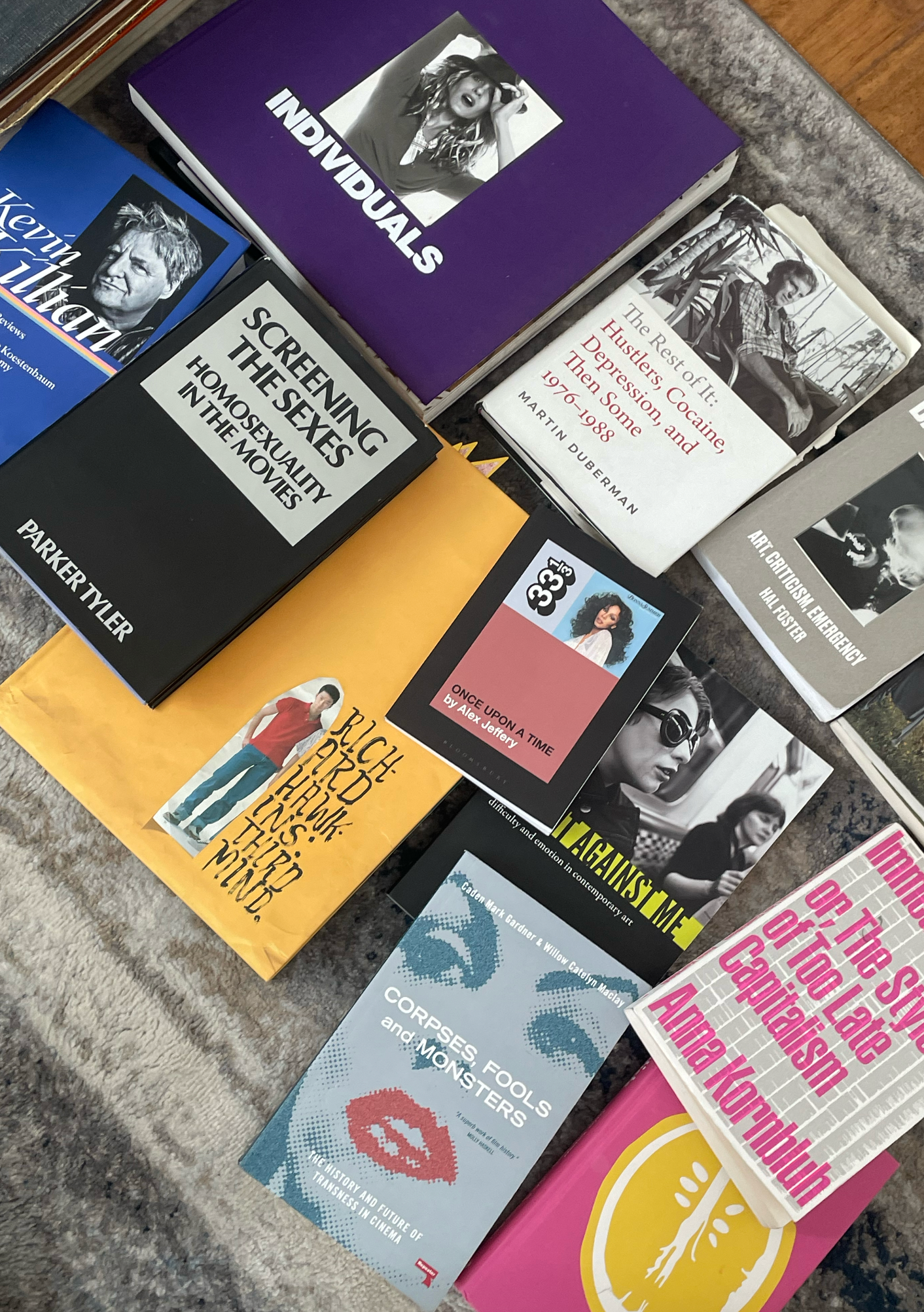
Photography by Gray Wielebinski
